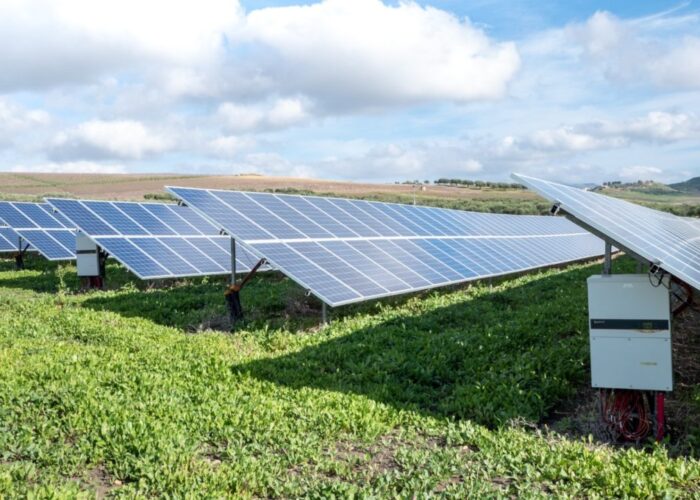Solar Frontier is not only targeting a widely reported reduction in costs around US$0.40 per watt within two years, but is also hoping to reach grid parity in Japan for residential PV systems with integrated battery storage in the next three to four years.
The thin-film manufacturer and developer has elaborated to PV Tech on remarks by its CEO Atsuhiko Hirano, reported by Bloomberg at the beginning of this week. Following the opening of the company’s latest 150MW plant in its homeland in April this year, Hirano reportedly said that this was the minimum size of factory necessary for efficient production for Solar Frontier’s thin-film CIS technology.
Unlock unlimited access for 12 whole months of distinctive global analysis
Photovoltaics International is now included.
- Regular insight and analysis of the industry’s biggest developments
- In-depth interviews with the industry’s leading figures
- Unlimited digital access to the PV Tech Power journal catalogue
- Unlimited digital access to the Photovoltaics International journal catalogue
- Access to more than 1,000 technical papers
- Discounts on Solar Media’s portfolio of events, in-person and virtual
Solar Frontier’s general manager for communications, Hideki Gakumazawa, confirmed the company believes it can lower costs at the 150MW plant, in Japan’s Tohoku region, to the US$0.40 per watt threshold “within two years”.
Grid parity on home turf
Over the past couple of years Solar Frontier has been on a global push into other markets including Europe and the US, including an expansion of its downstream project business with the acquisition of Gestamp Solar’s North American utility-scale pipeline. However, Gakumazawa said that the near-attainment of grid parity in Japan’s residential market would make Solar Frontier’s solar competitive with the grid next year, and at or below grid parity even with batteries included – if cost reduction strategies are successful.
“…We believe we can provide residential systems that are competitive with and soon-to-be cheaper than electricity from the grid. More precisely, we are aiming to bring the residential system price, currently averaging across the industry between 300,000 to 350,000 yen per kilowatt-peak, to 290,000 yen per kilowatt-peak by 2016,” Gakumazawa said.
“And including storage, we are targeting grid parity by 2018-2019.”
Other countries beside Japan are also reaching the end of their feed-in tariff regimes, including Germany and the UK, both booming solar markets at times over the past five years. In some cases this has come more suddenly than expected. The value proposition for solar in Germany at residential scale is almost entirely in onsite self-consumption by the system owner, saving money on their bills rather than making money on a FiT scheme.
For Solar Frontier, Gakumazawa said, the shift towards self-consumption in Japan will be partly fuelled by knowledge gleaned from Germany and other increasingly self-consumption driven markets.
“The shift from FiT-driven markets toward “self-consumption” markets has already been taking place in countries such as Germany. So we are actually incorporating learnings in Japan from these markets.”
While in Japan, it has long been customary to sell household PV systems in complete ‘kit’ bundles, including panels and power electronics, Gakumazawa echoed something Hirano told PV Tech in a previous interview – that Solar Frontier saw standardised, bundled kits, including CIS-optimised inverter and with a battery as an option, in a simplified package, as being key for selling into these grid parity markets.
Standardising the kits, Gakumazawa said, “also enable simpler and quicker planning and installation, further contributing to cost reduction”.
Thin-film competition
In 2014, when Solar Frontier’s newest production facility in Tohoku, Japan was under construction, it was part of a total 2GW of new thin-film capacity announcements, marking something of a comeback for the technology. Hideki Gakumazawa confirmed that CIS modules from the Tohoku plant will hit 14.7% efficiency as the plant ramps up.
Atsuhiko Hirano has long been vocal in his opinion that thin-film technology can compete in the global PV market. PV Tech asked Gakumazawa if Solar Frontier expected more competition within this market, or whether it would be a question of competing with rival cell technologies.
“Thin film has proven to be competitive in terms of performance and cost. The market, though, has proven that it isn’t just a matter of technology. It’s also about corporate strength, resources and strategy. Therefore, we compete primarily with crystalline silicon in the market and anticipate this will be the case for the medium term. While news from thin film manufacturers remains mixed, we do see strong potential for thin film to grow in capacity, and there are now also announcements for new capacity additions,” he said.
1GW capacity addition hints
Finally, Bloomberg reported that Solar Frontier was considering production capacity additions of 1GW outside Japan, but CEO Hirano had declined to give specifics. Looking for clues, PV Tech asked if the production sites were likely to be spread across a number of sites or concentrated in one or two locations.
The company has previously said that its modestly sized 150MW Tohoku plant would be the “blueprint” for Solar Frontier to set up a modular, scalable method of production suitable for locating as close to the end destination for its products as possible, essentially to keep costs low. While Gakumazawa remained tight-lipped on specifics, he did say there was a strong likelihood of future capacity expansions being spread across multiple locations.
“…We are looking at multiple areas with strong demand and supply networks in place,” Gakumazawa said.
“The Tohoku Plant is also designed to be modular; in other words, this is the design that overseas plant/plants would take with the option of scaling up the size in units, while enabling us to construct the plant more efficiently.”







